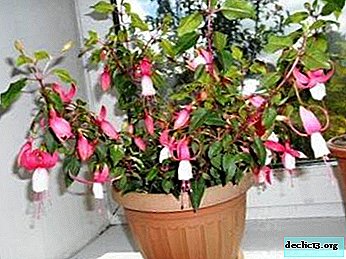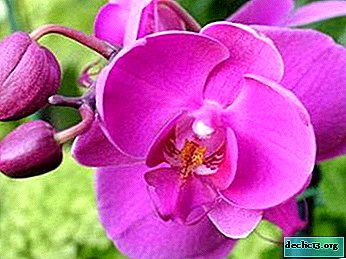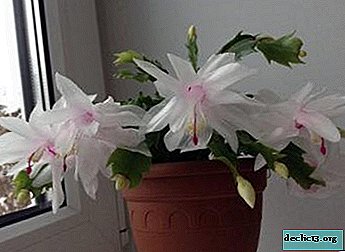The most common reasons why the cactus does not bloom, what to do to bloom, as well as tips for caring for the plant

A long-awaited moment for every lover of cacti is the flowering of a prickly pet. But sometimes this moment never comes. Flower growers begin to worry, intensely "cherish" succulents and do not even realize that by their actions they only postpone such a long-awaited moment.
Why might a cactus not bloom? What fertilizers should it be fed? How to care for this succulent? The answers to these questions are given in our article.
Flowering species
All types of cacti sooner or later begin to bloom, but most often the blooming of buds takes place in the following species.
Mammillaria

A plant with a spherical or cylindrical shape of the stem is greenish - silver in color, up to 25 cm high. A characteristic feature - white thin threads that bind thorns. Flowering time - spring, flowers (up to 2 cm in diameter) of pink or lilac color are arranged in a ring around the top of the stem.
Echinopsis

A plant with a green spherical or cylindrical stem, powerful ribs and short spines. Red, white, pink flowers grow on a pubescent tube, can have a diameter of 14 - 20 cm. They bloom at night, giving off a wonderful aroma. Flowering time - spring - autumn.
Cereus

The stalk of a columnar shape with pronounced ribs has a height of up to 1 m. Depending on the variety, it can be smooth or with prickly needles. Flowering time - summer, flower length can reach up to 15 cm, color - white. Some varieties of Cereus bloom during the day, others at night..
Astrophytum

The stem is spherical or elongated, can be covered with long curly needles, and can remain smooth (it all depends on the variety). White and yellow flowers bloom in spring and summer.
Rebucius

A plant with a rounded fleshy stem, covered with spiral ribs and short stiff spines. Cream, pink, and purple flowers have elongated tubes of glossy fused petals. Their diameter is about 2.5 cm.
Description and photos of all types of flowering cacti you will find in another article.
Young age
All types of cacti become capable of flowering only after reaching a certain age and certain sizes.About half of all varieties of flowering cacti will give pasture of the buds of the year in 3-4 (Mammillaria, Astrophytum, Echinopsis, Gymnocalycium). Some Rebucius, Aylostera bloom in the first - second year of life, but Ferocactus or Trichocereus bloom for the first time only after 10 - 15 years from the time of sowing.
Not a season
Most cactus varieties bloom in spring after waking from hibernation. It is in the spring that active metabolic processes begin to occur in succulents, which gives an impetus to budding and subsequent flowering. But everything is purely individual: it so happens that succulent begins to bloom in autumn or winter.
Why is it not blooming and how to make it bloom?
- No winter dormancy (December to March).
It is during this period that the cactus lays flower-bearing buds, and if all conditions are not met, the cactus will not bloom in spring. In winter, watering is reduced (light irrigation of the soil 1 time per month) or completely stopped, the plant is placed in a place where the thermometer shows the mark from + 5C to + 15C. With the onset of spring, watering resumes.
 Soil composition.
Soil composition.Cacti are very sensitive to the composition of the soil and will not grow in clay soil if they prefer sandy peat. Before planting a cactus, it is necessary to take into account its preferences in order to avoid such situations.
- Too spacious pot.
The plant seeks to develop the root system until all the space inside the tank is filled, and only then the cactus begins to develop the aerial part and flower buds. The way out is to transplant the cactus into a smaller pot.
- Lack of airing.
In summer, the plant should receive a maximum of fresh air. He needs temperature differences - they harden the plant and prepare the cactus for wintering. Therefore, in spring and summer, even in autumn, it is better to put the succulent on a balcony or open air. The nighttime temperature difference hardens the plant, preparing it for winter.
Important! It must be remembered that the plant does not tolerate drafts. - The presence of a large number of children on the plant.
The processes, located on the mother plant, feed on it. Naturally, this undermines the strength of an adult cactus, and they simply do not remain on the pasture of the bud. It is easy to solve this problem: it is necessary to remove all the children from the plant (they can be sent for rooting).
- Changing the position of the pot on the window at the time of laying the buds.
If this happens, then the succulent, which is called "lose landmark in space." Its flower-bearing bud will begin to dissolve or repackage. In order to prevent such a situation, you can mark the pot with a marker and constantly make sure that the mark is always in the same position.
- Comfortable living conditions.
Regular watering, proper lighting, systematic top dressing - all this, oddly enough, does not play the best role in the process of budding of a cactus. Succulents are accustomed to "survive" in natural conditions. If they are provided with everything necessary, then the plants "relax" and forget about flowering. The solution is to reduce watering and reduce the amount of fertilizer applied.
How to feed the plant and what fertilizers should be applied?
 In order for the cactus to bloom, it must not suffer from either “hunger” or “overfeeding”. Fertilizing it is necessary, but it must be done wisely. Organic fertilizers are not suitable for succulents. But complex and mineral fertilizers from the store - that’s it!
In order for the cactus to bloom, it must not suffer from either “hunger” or “overfeeding”. Fertilizing it is necessary, but it must be done wisely. Organic fertilizers are not suitable for succulents. But complex and mineral fertilizers from the store - that’s it!
Complex fertilizers for decorative cactus flowers will not work because of the large percentage of nitrogen in them. When buying fertilizer in a store, you should stop your choice with those that contain the mark "For cacti and succulents" in the instructions. Of mineral fertilizers, the best option is to water with a solution of potassium phosphate (1 g per 1 liter of water) 1 time per week for one month.
General rules for home care
How to care for a plant so that it blooms? Despite the fact that the cactus is an unpretentious plant, accustomed to survive in extreme conditions, still it needs basic care.
- The right choice of location.
Cacti growing in the desert need a lot of light, but forest dwellers prefer partial shade.
- Proper watering.
Cactus adapted to life without water for a long period. The dormancy period for cacti living at home begins in winter. But at other times of the year, the cactus should be watered regularly and in moderation: in summer and spring - 2 times a week, in autumn - 1 time per week.
Succulents respond well to melt and rainwater. - Transfer.
Cacti need a change of soil, so once every 2 years they need to be transplanted into a new substrate and pot, which is 1 - 2 cm in diameter larger than the previous one.
Observing all of the above requirements, you can bring such an exciting moment as the flowering of a cactus. And such a bewitching sight is worth all the effort!

 Soil composition.
Soil composition.















